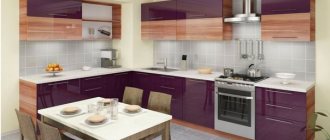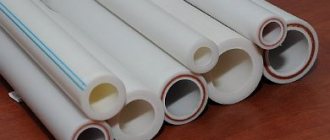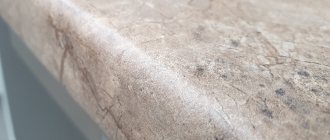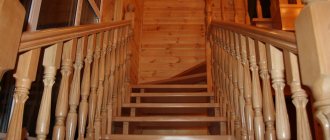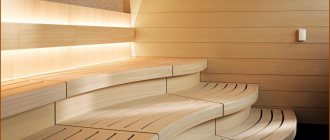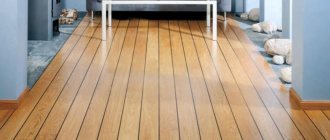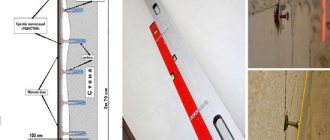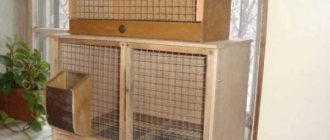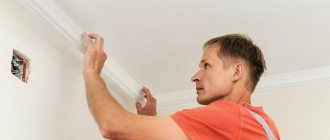Block house - what is it?
What is a block house made of?Wooden block houseVinyl block houseMetal block houseAdvantages and disadvantages of a block houseInstallation of a block house
Various materials are used to renovate and cover the façade of buildings. One of the most popular types at the moment is the block house, which gives the exterior of the house a beautiful appearance and ensures its durability. The development of this unique finishing material was a breakthrough in the construction industry, significantly simplifying the work process and making it less expensive.
What is a block house?
Wood has never gone out of fashion. Frame houses and various log buildings literally received a second life. Lumber for finishing work is no less in demand in our “age of glass and concrete.” Therefore, in retail outlets you can see a large assortment of cladding products of various sections. Especially among them it is worth highlighting the so-called “block house”, which is one of the leaders in sales volumes.
Varietal blockhouse
Wall of a block house
Important! Each block house panel on the back side is equipped with longitudinal grooves (one large or several small ones). They are milled here in order to provide ventilation to the finished skin, to remove moisture and relieve thermal stress resulting from temperature changes. We can say that the presence of this element is a generally accepted rule of good form in the production of all modern profiled wood parts.
Alta-Profile
The manufacturer Alta-Profile specializes in the production of house panels from PVC and acrylic . The imitation of wood panels exactly matches the texture of natural materials. The advantage of Alta-Profile coating is ease of installation, affordable cost, and environmental friendliness of the material.
Vinyl structures are distinguished by their ability to withstand low temperatures. Acrylic material includes high-tech modern polymers that provide the coating with rich color and durability.
Technical characteristics of Alta-Profile:
- panel length - 310 cm;
- width - from 20 to 32 cm;
- thickness - 0.11 cm.
The material is sorted into packages of 12 or 16 pieces.
IMPORTANT!
Alta-Profile products regularly undergo all stages of product quality testing, which is confirmed by relevant documentation.
Alta-Profile occupies a leading position in the market in the field of finishing materials.
Section Features
This material is often called a special type of lining. It has a similar scope of use, principles of application, is produced using similar technology and from the same raw materials. But there are also differences. Therefore, let’s still consider a block house to be a facing profiled board.
Unlike other profiled solid wood products, the block house is an imitation of rounded logs. After covering the walls, the house will look as if it were a log house, and it does not matter what the supporting structures are made of. This effect is achieved primarily due to the rounded front face, as well as the use of solid wood without any traces of adhesive splicing.
A significant element of the block house panel is a well-developed castle. Each product has a tongue and groove. Thanks to this solution it is possible to:
- assemble the skin without through gaps between the elements;
- use a hidden fastening option when the nail/screw or clamps are covered by the next panel;
- increase overall installation speed.
Installation without insulation
We recommend using it for finishing the external walls of well-insulated buildings. This technology reduces the total estimated cost of construction work and shortens its time. There are no fundamental differences in technology. If, during work with insulation, the installation was carried out precisely for the main lathing, and the counter-lattice was done automatically, then here you need to correctly fix the slats for the block house.
Wall before finishing
Fixed sheathing and installation of block house
Exterior of the house after finishing
The most difficult finishing areas are door and window openings. Work very carefully. Take all measures to prevent water from getting between the wall and the sheathing.
House lined with block house
Raw materials used and production
A block house can be made from almost any wood. Deciduous round timber can be used for this: oak, aspen, alder, linden. However, products made from pine or spruce have gained the most popularity. Domestic needles are relatively inexpensive, they tolerate changes in humidity well and are quite durable.
Important! To make a block house, exclusively healthy, living forest is selected. The use of dead wood or burnt wood for a block house is unacceptable, due to a decrease in the strength characteristics and durability of such raw materials.
To obtain a block house, the log is first cut into edged lumber. Then the workpieces of suitable cross-section (this can be either a timber or a board) are combined into bags and placed in drying chambers. Through controlled heat treatment, the moisture content of materials is reduced to 10-12%, which makes it possible to obtain a stable workpiece that can be processed efficiently on machines.
Then, high-speed cutting equipment is used to mill the working elements of the part (rounded front side, back flat side with grooves, tenon/groove). The house block lamella is usually formed in one or two passes and then trimmed to length.
At the final stage, the products are inspected, measured and sorted into categories, depending on the identified defects (wood defects, processing flaws...) and deviations from the specified dimensions. The very last operation can be packaging of profiled parts in protective polyethylene film.
Tongue-groove connection
Typical profile drawing
Production scheme
Packaging a profiled product that has undergone multi-stage processing is an important circumstance, because allows you to maintain the moisture of the product and protects it from dust and dirt. If the seller offers you to purchase a block house without vacuum packaging, then most likely you are buying a low-quality product with natural moisture and, as a result, during operation, it will begin to crack and twist. Be careful and don't make decisions based solely on the cheap price.
Installation work
We’ve figured out the block house (what it is and what it comes in), now let’s figure out how to use it. Before you start attaching the blockhouse to the wall, you need to carry out preliminary installation of the house sheathing. This base is made using a square beam (30x30), which is positioned vertically in increments of 60 centimeters. Fastening is carried out using special dowels. The general scheme for creating cladding from a blockhouse is as follows:
- attaching vapor barrier to the wall;
- creating sheathing;
- laying insulation (foam plastic, mineral wool, polyurethane foam, etc.);
- windproof film;
- second layer of sheathing (to create a ventilation gap);
- block house.
Important! It is necessary to treat the timber with a protective solution that will protect the wood from corrosion and insects. Also, when installing each layer, you need to use a building level, otherwise the risk of creating an uneven wall increases.
Block house prices
| Product name | The price of the product |
| Block house 28 x 140 mm - grade “A” | RUB 1,250.00 |
| Block house 28 x 140 mm - grade “A” (Arkhangelsk Forest) | RUB 1,300.00 |
| Block house 28 x 145 mm - grade “A” | RUB 1,250.00 |
| Block house 36 x 140 mm - grade “A” | RUB 1,420.00 |
| Block house 36 x 190 mm - grade “A” | RUB 1,440.00 |
| Block house 36 x 190 mm - grade “A” (Arkhangelsk Forest) | RUB 1,500.00 |
| Block house 45 x 190 mm - grade “A” | RUB 1,800.00 |
| Block house 45 x 240 mm - grade “A” | RUB 1,850.00 |
| Block house 45 x 240 mm - grade “A” (Arkhangelsk Forest) | RUB 1,950.00 |
Tecos
Canadian manufacturer Tecos produces high-quality vinyl flooring imitation block houses. Thanks to the quality characteristics of the products, the company has its consumers in Russia.
Tekos panels have distinctive features:
- the material is resistant to low temperatures;
- the panels are durable and resistant to weather conditions;
- has increased moisture resistance.
The coating has good thermal insulation properties, as well as a variety of colors.
According to the technical characteristics of Tecos vinyl panels, they are determined by the following indicators:
- length - 3780 mm;
- width - 264 mm;
- sheet thickness - 1.2 mm;
- plate weight - 2.03 kg;
- flammability - G2 class.
The panels are laid by the manufacturer in 18 pieces per package.
Regulatory documents and sorting in the production of block houses
This material is new, coming to us from abroad, and for it in our country there are no GOST standards that would normally describe all the nuances of products and could qualitatively regulate the relationship between the buyer and the manufacturer. Therefore, manufacturers use those standards that are similar in spirit or more suitable for the specific conditions of their production. That’s why there are so many block house options on the domestic market.
Most often, the Soviet GOST 8242-88 Profile parts made of wood and wood materials for construction are used as a guide. Data is taken from its provisions:
- on permissible geometry deviations when cutting parts,
- about the parameters of processing cleanliness (roughness),
- about acceptable defects (on visible/hidden surfaces of lamellas, under transparent/opaque coating),
- about the humidity of the product (up to 12% the finished material can be installed indoors, up to 15% - outside the house),
- about packaging and transportation rules,
- about quality control methods.
Important! Knots on the front surfaces are allowed in unlimited quantities, both dark and light. But only - captive and no larger than 1/3 of the width of the lamellas, since they do not spoil the appearance and do not reduce the strength of the material. Non-through cracks with a length of up to 1/6 of the length of the block house and a depth of up to 1-3 mm are also allowed. Rot is prohibited here in any form.
Some manufacturers are guided by foreign standards. For example, many people refer to Solid softwood paneling and cladding - Machined profiles with tongue and groove; German version EN 14519:2005 – the German version of the pan-European standard with the title: “Solid softwood panels and cladding – with profiled groove and tongue.” In many provisions it is similar to our GOST, but among other things, it proposes to distinguish two quality classes: A and B.
Blockhouse grade A
Blockhouse grade AB
Blockhouse grade C
Currently, the most common grades of block house on the lumber market in Moscow and the Moscow region are grade A, AB and grade C. The consumer has the opportunity to buy a block house of a suitable category in accordance with the requirements for the room being sheathed or the structure being installed. The categories can be called whatever you like, “extra/classic”, “grade A or B” or some intermediate options “AB” or third grade (category C) here, as a rule, there is no exact finishing specification of the material. Products of better quality are somewhat more expensive; they are used on the facade or for cladding inside the house.
Let us give an approximate classification and recommended methods of finishing work by category and grade. Category (grade) A - these are sorted materials, with knots of different sizes, but always healthy and not falling out; there should be no black rotten knots either! Areas with a fleecy surface and slight dull wane on the back side of the lamella are allowed.
Grade A is ideal for painting with clear varnishes. To be fair, it is worth noting that purchasing such material at an affordable price is quite problematic, due to the fact that the tree grows against the wishes of the manufacturer and the buyer. The size of 6 meters offered for sale is the most universal for all types of transport and lumber preparations. As a result, on a 6-meter piece, in 1-2 cases out of ten there will be an ideal ratio of healthy knots, and on 8 products there may be a number of dark, but not fallen, knots and the material sold under grade A will mean grade AB. You should look for pure ashka up to 4 meters in length and under the “extra” or “prima” grade, the cost of which will be 3-5 times higher than the cost of category A_B.
You can compensate for some grade deviations by using tinted paints or varnishes, this way you can buy affordable, good quality material and, after protective paint and varnish measures, get an excellent aesthetic and durable facade. We recommend comprehensive protection with Krasula paint.
Grade BC and C are characterized by areas with a dark color, fallen knots, and a certain amount of sharp wane and cracks. This grade is usually used for cladding the “back, rough” walls of a house, making gazebos, cladding dark and other auxiliary rooms and buildings on the site. Additional treatment with protective and paint compositions will extend the service life of this type of material.
Which size to choose
The standard and most universal length of a block house can be considered 6 meters, although there are other shorter options on sale.
The thickness of products varies greatly between different manufacturers, as well as in the line from one company. From us you can buy a block house with a thickness of 45 mm, as well as 36 and 28 mm. These options allow you to choose the most optimal parts in terms of price and strength for any conditions. For example, for a facade, the best choice would be a 45 mm lamella, which is very strong and reliable, does not require the installation of a large number of load-bearing beams on the frame - a step of 600 mm (convenient for installing insulation boards) will be just right here. And thinner products, 28 mm thick, will work well indoors.
The terrace of the house is covered with a block house
Attic ceiling finishing - blockhouse
The width of the profiled imitation log boards is also not the same. There are narrow parts with a width of 140 mm, and there are wider products that look more like real logs - it is preferable to take them for wall cladding from the street. In the rooms, a block house with a width of 140 or 190 mm looks more organic and advantageous.
Important! The tenon of a block house is always hidden by the groove of the adjacent lamella, so the total width of the product and the working width are distinguished - that is, the one that will remain visible after installation. Don't lose sight of this when ordering material.
The thickness of the block house is determined from the back side to the highest point of the radius at a right angle. It is usually in relation to the width of the part so that the optimal proportion of the section can be maintained, both from the point of view of visualization and from the point of view of strength characteristics (a wide board with insufficient thickness is prone to transverse warping and cracking). Therefore, the following sections became popular: 28X140, 36X140, 36X190 or 45X190, 45X240 mm.
Types of imitation logs
An alternative to wooden cladding in the form of lining can be a coating made of other materials:
- metal Steel galvanized wood-look siding in the form of clapboard is used to imitate natural wood. The material has high strength, fire resistance, moisture resistance, color brightness, and sun resistance. The disadvantage of the coating is the ability to heat up, thereby providing an increased temperature in the room;
- vinyl. PVC imitation has strength, resistance to moisture, a wide range of colors, low cost, but tends to fade in the sun and is brittle at low temperatures;
- acrylic The ability to withstand sunlight and increased strength distinguishes acrylic panels from vinyl. The material is quite durable and most in demand.
NOTE!
High-quality imitation of wooden lining is achieved through the manufacture of the material in high-tech production.
The use of high-quality polymers and dyes gives the material a visual similarity to wood.
What to look for when choosing
To summarize, let’s try to briefly highlight the main points:
- 1. Do not rely too much on the name of the variety that the manufacturer assigned to its products (since there are no uniform standards). Inspect and compare, choose what suits you in terms of price and quality.
- 2. Visually assess the condition of the goods for the presence of rot, falling knots (healthy ones are the norm), through and long end cracks.
- 3. If you have access to a hygrometer, check the humidity.
- 4. By placing the products on flat surfaces, try to determine possible warping.
- 5. Test the operation of the locks - the connection should be easy, but also moderately tight.
- 6. Choose a section depending on where the block house will be used.
- 7. When making calculations for your order, take into account the difference between the total and working width of the lamella.
Tips/Tricks
• When choosing panels, you should pay attention to the placement of annual rings. The close arrangement to each other indicates good quality wood and high density. • To fix the block house, you do not need to use special fasteners; ordinary screws or clamps will do. • Using clamps for installing panels will help prevent the formation of cracks and other deformations of the board. In this case, the joints will be almost invisible. • Insulation can be laid between the facade of the building and the block house, which will increase the energy efficiency of the house. When choosing a thermal insulation material, preference is given to mineral wool. Polystyrene foam has low vapor permeability, which negatively affects the condition of the wood. • If it is planned to lay an insulating layer, then the dimensions of the beam are selected based on the parameters of the heat insulator. The popularity of the material has provoked the introduction of low-quality products to the market, so panels should only be purchased in specialized stores where you can view the quality certificate.
Share:
